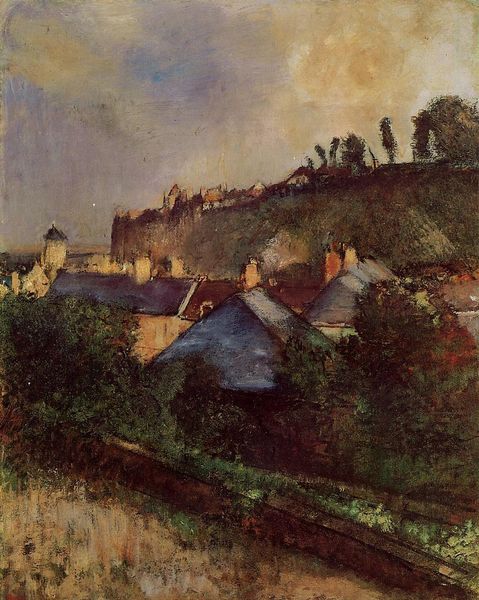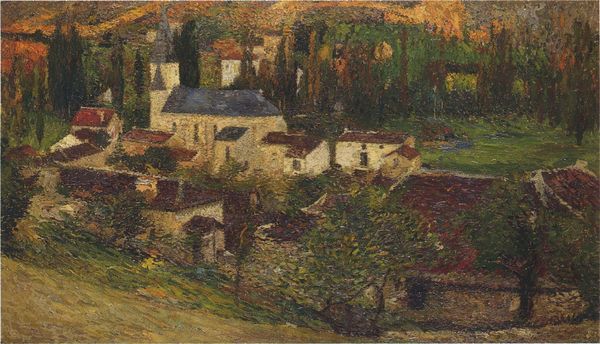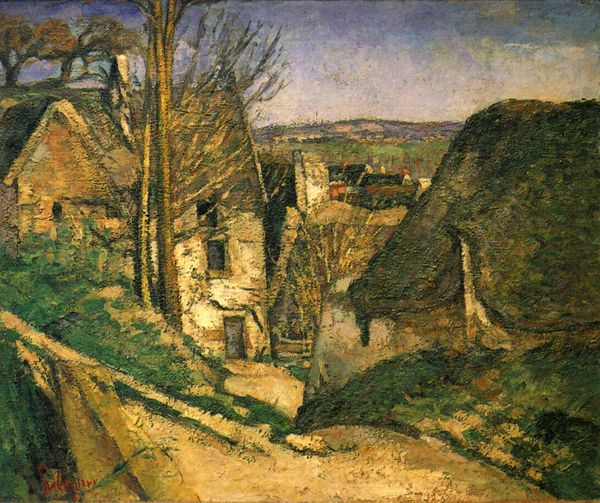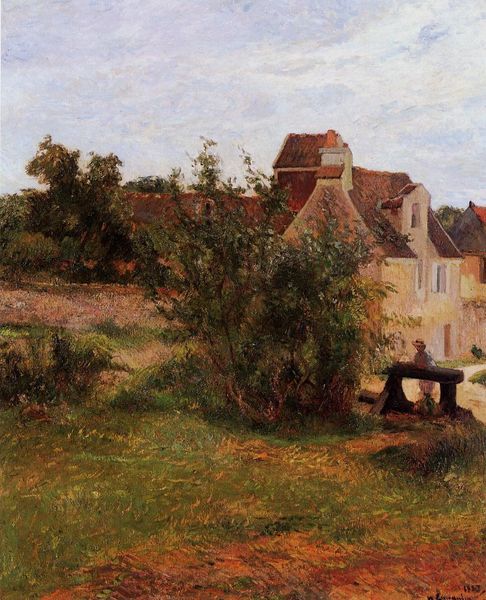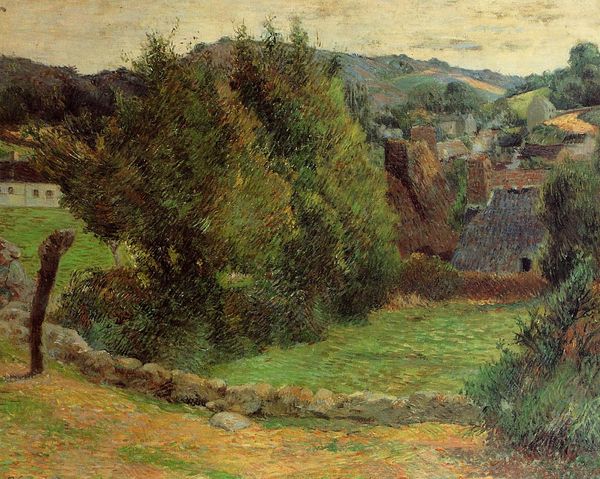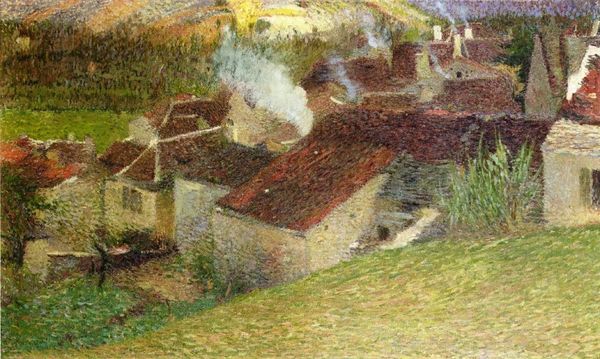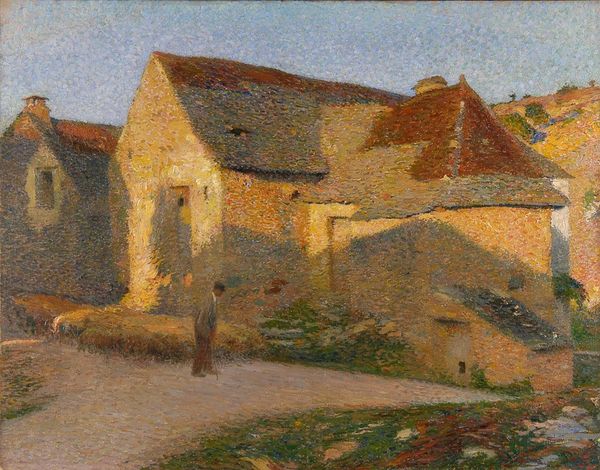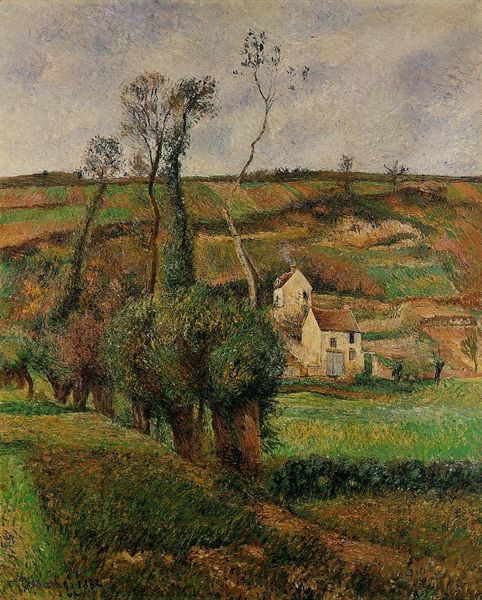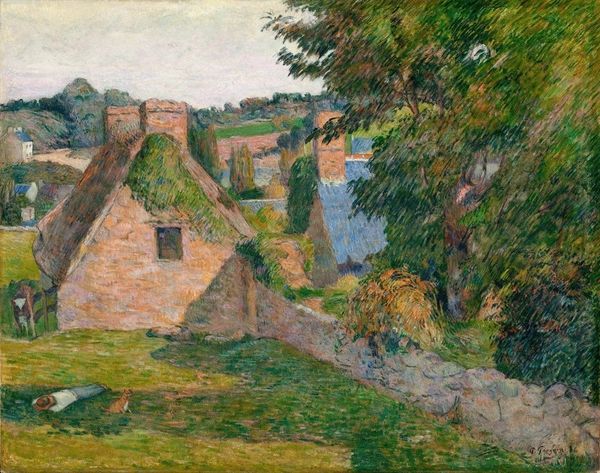
#
abstract painting
#
impressionist painting style
#
landscape
#
impressionist landscape
#
possibly oil pastel
#
oil painting
#
acrylic on canvas
#
naturalistic tone
#
seascape
#
painting painterly
#
watercolor
Copyright: Public Domain: Artvee
Curator: Looking at "Houses at Vaugirard," my initial thought is one of serene containment. It's quite earthy. The buildings feel nestled into the landscape. Editor: Let’s delve a bit deeper. While the exact date remains undetermined, "Houses at Vaugirard" is credited to Paul Gauguin. Curator: It presents a really interesting depiction of everyday life—that kind of pastoral scene that has long served to disguise so many different dynamics about the way society works, from agricultural systems to the ways class functions on the ground in small towns. Editor: Absolutely, the piece provides a glimpse into 19th-century French suburban life, but I wonder how Gauguin’s later focus on more exotic locales, places that certainly can't be classified as towns or suburbs, shifts our interpretation? Curator: Well, I think it adds another layer. There's always been this urge, particularly in Western art history, to look for authenticity elsewhere—in cultures that are deemed more pure or unspoiled. Maybe these houses were the genesis for a larger quest to depict subjects that would seem more representative of an "authentic" reality than anything he would encounter in the city. Editor: That's astute. Considering that the urban landscape was undergoing rapid change, the painting might also serve as a quiet commentary on tradition. The roofs are at eye level which brings us close to something solid and immutable as opposed to being immersed in the rapidly shifting cityscape. Curator: Yes, or even making it about how art itself mediates our relationship to these environments and to ourselves. To that point, are we looking at a watercolor? Maybe oil on canvas? Editor: It’s thought to possibly be oil on canvas, allowing Gauguin a lot of texture that feels like observation. The material realities and class dynamics are present, yet subdued. He shows a moment without delving into harsh societal critique, perhaps reserving that for the people who leave places like this behind for dreams of paradises elsewhere. Curator: Right, maybe the radical element is in the seemingly "normal" depiction because the seeds for future action are here, dormant in the material that he paints, so to speak. It provides a necessary step for self-critique and potential upheaval later on. Editor: It is, undoubtedly, a powerful composition. Viewing "Houses at Vaugirard" really highlights not only Gauguin's mastery, but it demands consideration of how art, history and social commentary blend. Curator: I agree. It really prompts us to ask—where does this 'housescape' fit within his exploration of modernism and his, ultimately problematic, vision?
Comments
No comments
Be the first to comment and join the conversation on the ultimate creative platform.
